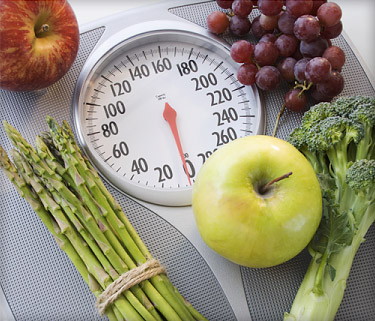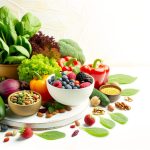A Healthy Diet Is Affordable for Most Households…
Most U.S. households are able to buy these meals, particularly the Thrifty Food Plan, on a budget. In 2006, four-person households spent around 8% of their median income on the Thrifty Food Plan, and 11% of their median income on the more expensive Low-Cost Food Plan. Around 11 percent of a person’s earnings are similar to the 10 percent that the typical American family spends annually on food. It appears that healthy diets are likely as reasonable in price as the food Americans are normally eating, considering that the typical US household invests around 10 percent of their earnings on food.
Those with the least amount of income given by SNAP are able to afford a healthy diet, as the maximum amount of assistance is equal to the cost of the Thrifty Food Plan. For roughly 33% of households that take part, the total SNAP benefits they get are enough to purchase a balanced, healthy diet.
Nonetheless, if these households need to pay out more money for food than what is calculated in the Thrifty Food Plan, then their SNAP aid might not be enough. In order to cut down on potential risks, CNPP established its Thrifty Food Plan cost estimations entirely on what economically disadvantaged households spend on groceries in 2007. Nielsen, a market research firm, provided data. Families who take part in the Nielsen “Homescan” survey provide information about what food they have bought, and then Nielsen correlates that information with the prices they were charged. The Consumer Nutrition and Purchase Panel (CNPP) is capable of estimating the expense of the Thrifty Food Plan with the help of the average prices reported by households of lower income. Therefore, the plan’s cost aligns more closely with the prices found in shops that SNAP recipients tend to visit.
In some regions where living costs are particularly high, lower-income households may still be confronted with greater prices than other lower-income dwellings. The amount of money typically spent on food by any specific family is usually different from what is considered to be the average cost of food. Prices vary regionally and locally across the United States. Families residing in New York City may require a higher amount of money to cover food costs compared to those who live in South Bend, Indiana.
5 of the Most Nutrient-Dense Foods That Won’t Break the Bank
The newly-published Dietary Guidelines for Americans emphasize the importance of making optimal choices in regards to food and beverage consumption. Optimum nutritional intake can be achieved by selecting foods and beverages that deliver the most nutrients. Nutrition expert Samantha Cassetty, MS, RD, explains that foods and drinks that are nutrient-dense provide a lot of important nutrients such as vitamins, minerals, antioxidants, and bioactive substances in every portion. Cassetty claims that nutrient-rich foods are generally unprocessed or minimally handled foods with very little, or even no, additional sugar, sodium, or processed grains.
Before reaching to your wallet for a second loan in order to purchase all the supposed “superfoods” advertised on your Instagram, reconsider your options. It is not necessary to spend a lot of money to select foods that are rich in nutrients. She also states that there are plenty of affordable choices which are easy to access as well. Consuming nutrient-rich items can be both beneficial for you and cost effective.
Canned Chickpeas
Incorporating chickpeas into your diet can increase your nutrient consumption and safeguard your wellbeing. Cassetty has suggested that diets containing chickpeas or hummus are heavier in fiber, vitamin A, vitamin E, vitamin C, folate, magnesium, potassium, and iron compared to those that don’t have these foods. It seems like these things really pack a nutritional punch! People who consume chickpeas were shown to have a lower chance of being obese, which may be due to the high content of protein and fiber. This may help to avoid overeating. A mug contains 15 grams of protein and 13 grams of fiber.
“Chickpeas are incredibly versatile and can be used in sweet or savory recipes,” she says. “I like adding them to baked goods and energy bites to give these foods a healthier spin. When roasted, they’re crunchy like nuts and make a filling snack or a crunchy garnish in salads and soups. Of course, they’re also an easy way to add more protein and nutrients to a meatless meal.”
Plain Greek Yogurt
Greek yogurt that isn’t flavored is cost-effective and accommodating for acquiring one of the three portions of dairy (or their equivalents) that are required each day. Cassetty points out that the majority of US citizens are not meeting their dairy requirements, which could explain why calcium and potassium, which can be found in dairy foods, are among the nutrients most people lack. Plain Greek yogurt can help fill the dairy gap. One cup supplies 270 milligrams of calcium, 345 milligrams of potassium, 27 milligrams of magnesium, plus 25 grams of protein.
Plain Greek yogurt is a beneficial and adaptable way to meet the daily requirement of three portions of dairy (or substitutions). Cassetty noted that the majority of individuals in the U.S. are not getting enough dairy, which could be the cause of calcium and potassium deficiencies. These two minerals are generally abundant in dairy products. Plain Greek yogurt can help fill the dairy gap. One cup contains 270 milligrams of calcium, 345 milligrams of potassium, 27 milligrams of magnesium, plus 25 grams of protein.
I like to begin my morning with a yogurt bowl of the Greek variety, but I also find it useful to sprinkle some of the same on top of flapjacks and tater tots. She emphasizes that Greek yogurt is a great topping for soup, and it makes the perfect accompaniment for fruit and vegetables as a dip.
Cassetty explains that 100 percent orange juice contains no added sucrose, making it an ideal substitute for fizzy drinks and other sweetened refreshments, which are the main contributors of additional sucrose to our nutrition. At this time, 63 percent of individuals consume more added sugars than is recommended.
A research study involving approximately 16,000 Americans revealed that those who drank 100% orange juice had diets that contained less added sugar and were more nourishing than those individuals who abstained from consuming the drink. It’s not shocking to find out that orange juice has a high amount of important vitamins, like vitamin C, potassium, folate and thiamin, when you drink it in its unadulterated form. It also offers magnesium as well as protecting substances derived from plants, like flavonoids and carotenoids. In addition to the natural nutritional benefits of 100% OJ, you can purchase it which has been improved with calcium and vitamin D. These two minerals are important for a healthy diet and this will help provide you with the necessary amounts.
Cassetty advises adding a generous amount of pure orange juice to sparkling water to create a delicately sugary and invigorating bubbly beverage. It can be entertaining to freeze (the beverage) in an ice cube mold and then utilize the icy cubes in either water or carbonated water. One hundred percent orange juice is an excellent way to sweeten a dish without any extra sugar.
Baby Spinach
This vegetable with the lush foliage is milder than the usual spinach, thus making it more user-friendly and diverse to cook with. Moreover, it is also one of the cheaper pre-washed leafy greens available in the market. Pre-washed baby spinach provides an easy and quick way to include these greens in a variety of dishes such as soups, smoothies, pasta meals, sandwiches and wraps. A small amount could have a notable effect on your well-being.
Research has indicated that having just one cup of fresh spinach or a half cup of cooked spinach daily can help retain cognitive abilities later in life. The investigation followed more than 900 elderly individuals over a period of 10 years and revealed that compared to those who did not habitually eat leafy greens, those who ate the recommended amount were as mentally and cognitively sharp as someone who was 11 years younger. Baby spinach and other leafy greens are a great source for important nutrients such as vitamin K, folate, lutein and beta carotene that may possibly help protect the brain.
Walnuts
Cassetty claims that walnuts have the highest amount of ALA, an omega-3 plant-based fatty acid, out of any type of nut. A single ounce of walnuts provides an outstanding amount of the anti-inflammatory fat. This plate also offers 4 grams of protein, 2 grams of fiber, and is an excellent source of magnesium, an element that plays a role in keeping blood pressure and glucose levels in a good condition, she elucidates. It was revealed in a study that having these items every day for a period of half a year greatly improved the quality of nutrition consumed and promoted a healthier level of LDL cholesterol.
Walnuts are good to eat as a snack, or you can put them on top of salads, oatmeal, and yogurt concoctions. You can also smash walnuts to use as a healthier option to breadcrumbs to coat chicken and fish.
Subjective Notions of Affordability May Also Create Barriers to Healthy Eating
Even when households have the necessary financial and temporal resources available to buy and cook food according to the Thrifty Food Plan, personal ideas of affordability impede some of the healthier food choices. It appears that a lot of shoppers in the U.S. believe that fruits and veggies, which are good for your health, cost too much money. In 2004, scientists at the University of Minnesota questioned 796 individuals to determine what elements affect their dietary preferences. Thirty-nine percent reported that the expense of eating a nutritious diet restricted their dietary choices.
Research which is based on observation and experience has revealed that eating a healthy diet does not necessarily mean having to shell out more money. A team of scientists from the State University of New York at Buffalo conducted an investigation on households that had signed up for a plan specially targeting overweight kids. Families were told to base their meals off of foods that are low in calories but high in nutrients. At the completion of the program, the health of the family improved and they had decreased their food expenditure. The scientists discovered that when families traded unhealthy snacks for nutritious alternatives such as fruits and vegetables, their expenses decreased.
The expense of nutrient-rich foods like fruits and vegetables does not have to cost a family a lot of money to buy. Researchers with the Economic Research Service estimated that, in 2008, a cup of apples and a cup of field-grown tomatoes each cost less than a dollar, with the former costing 37 cents and the latter costing 70 cents. This meant that almost half of the advised daily intake of fruits and vegetables could be bought for less than one dollar. The cost of many fruits and vegetables have not changed when compared to those of packaged snacks.
Evidence gathered from observing consumer behavior shows that price does not significantly restrict people from eating healthily. An examination of existing documents indicates that when the cost of vegetables drops ten percent, the number of cups of vegetables a lower-income household consumes in their home everyday will rise between 1.03 and 1.07 cups. It is estimated that offering a 10% price decrease for fruit will cause people to buy between 0.74 and 0.77 cups of it every day, up from 0.72 cups per day.
Even when price is not a factor, many people still prefer to purchase the less wholesome food as they feel that it gives them more for their money. People might opt for dishes that are less beneficial to their health due to its yummy taste and ease of access as opposed to ones that provide more nutrition. For some people, shelling out 75 cents to purchase an apple would be too expensive, but it isn’t too much for a soda.
Old-fashioned beliefs on what makes a nutritious meal could be a factor in people thinking that fruits and vegetables are too expensive. Studies sponsored by the Food and Nutrition Service have observed that a lot of deprived households think of animal protein as a sign of wealth and accomplishment and is an essential and foremost part of any meal. Studies done by the ERS suggest that families with incomes that fall below 130% of the poverty line are more inclined to purchase beef and frozen prepared meals as opposed to fruits and vegetables when given more money.
Low-income American households show the same pattern of consuming higher amounts of fats, refined grains, and sweeteners than what is suggested and consuming lower amounts of fruits, vegetables, entire grains, and dairy products that have a lower fat content. The Thrifty Food Plan allocates almost half of its budget to fruit and vegetables, which is not in agreement with dietary guidelines that promote the consumption of fruit, vegetables, whole grains and low-fat dairy products for a healthy diet.
If consumers want to get most nutritional bang for their buck, then fruits and vegetables would be a smart choice due to their high nutrient-to-cost ratio. In order to change people’s attitudes towards these types of foods, many Americans will have to put foods usually regarded as “accompaniments” at the center of their meals. This action would not only make nutritious eating more obtainable, it would also bring about better health.









